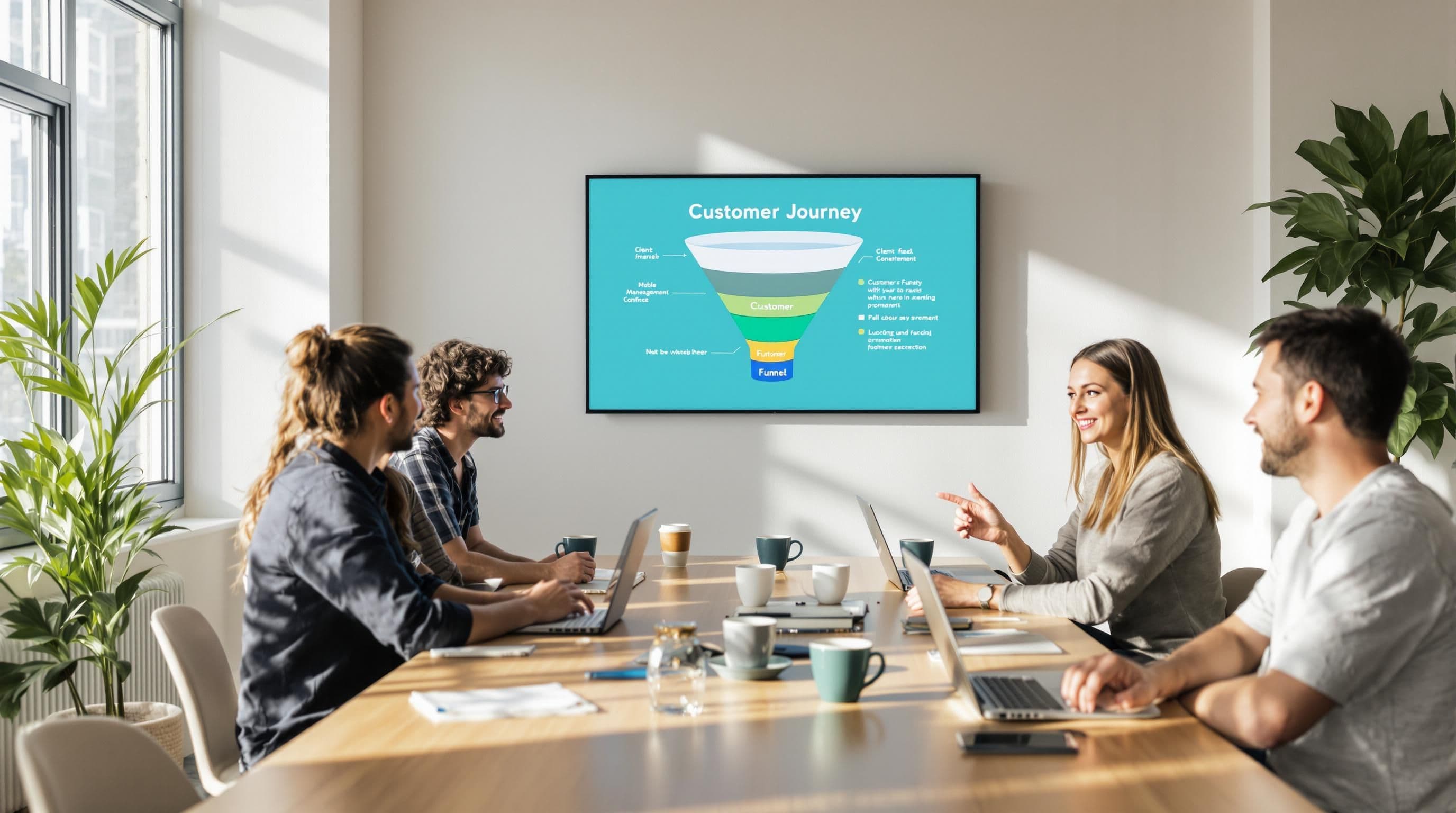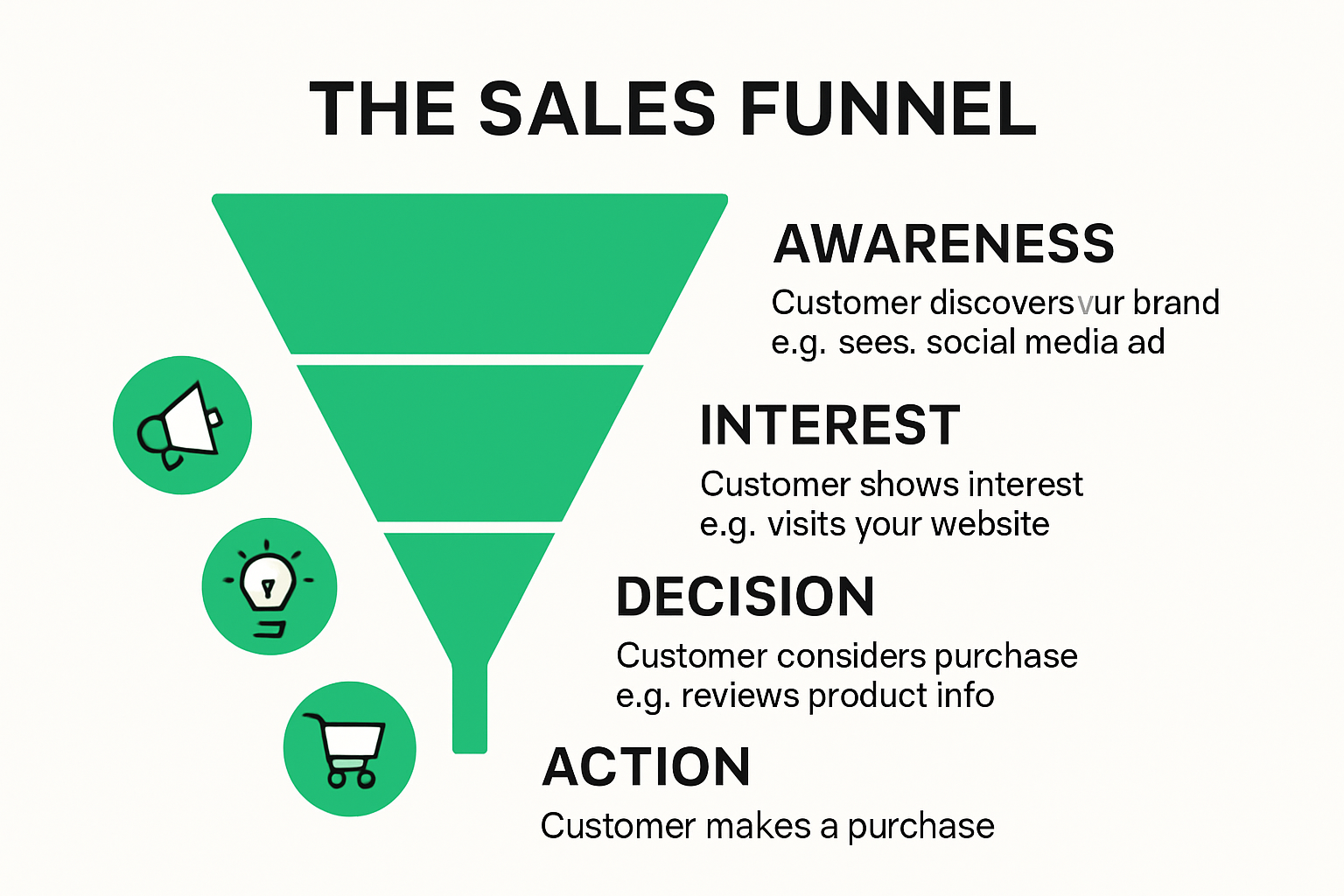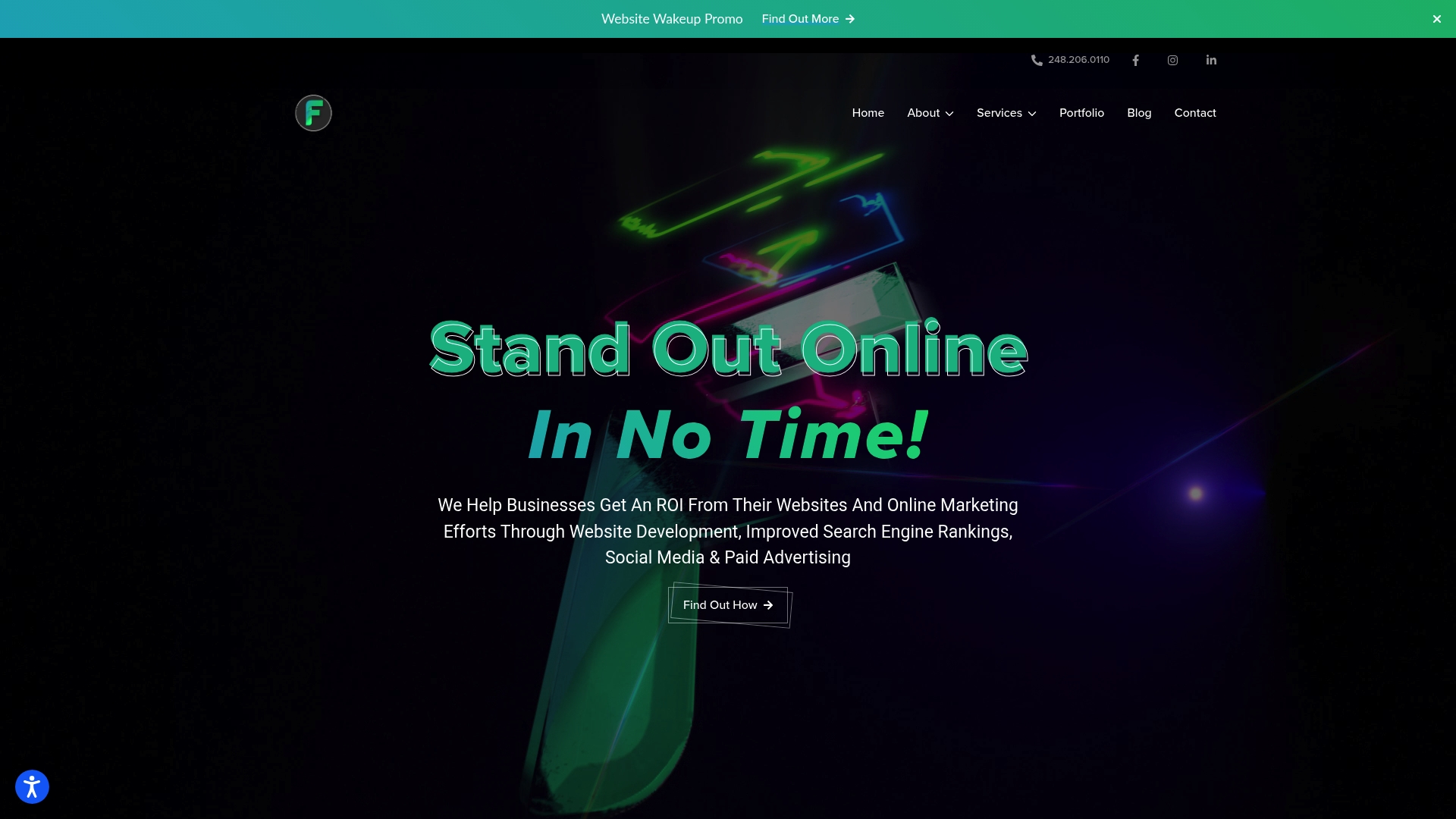Sales Funnel Basics for Small Business Owners 2025

Every small business dreams of turning new visitors into loyal customers and strong sales funnels are the secret framework behind this magic. Still, over 60 percent of small businesses say they do not understand how to guide leads from first click to final sale. Here is the surprise. The real power of a sales funnel is not just about moving people to buy. It is about building real relationships at every step that make customers stick around for years.
Table of Contents
- Understanding Sales Funnel Basics
- Key Stages Of The Sales Funnel Explained
- How To Build A Simple Sales Funnel
- Tips For Optimizing Your Sales Funnel
Quick Summary
| Takeaway | Explanation |
|---|---|
| Understand the Sales Funnel Stages | Familiarize yourself with awareness, interest, decision, and action stages to manage customer journeys effectively. |
| Craft Targeted Content for Each Stage | Develop specific content that addresses customer needs at every funnel stage to enhance engagement and conversions. |
| Use Data to Optimize Your Funnel | Implement analytics to track performance and make informed adjustments for better conversion rates. |
| Enhance Communication with Personalization | Create personalized interactions that resonate with prospects, improving engagement and customer experience. |
| Adopt Advanced Technology Tools | Utilize AI and CRM systems to automate processes and improve sales funnel efficiency for better results. |
Understanding Sales Funnel Basics
Sales funnels represent a strategic framework that guides potential customers through a systematic journey from initial awareness to final purchase. For small business owners, comprehending these fundamental principles can transform how they approach customer acquisition and revenue generation.
The Core Components of a Sales Funnel
A sales funnel breaks down the customer journey into distinct stages, each representing a different level of engagement and intent. According to the U.S. Chamber of Commerce, this process typically involves multiple critical phases that help businesses track and optimize their customer conversion strategies.
The traditional sales funnel consists of four primary stages:
- Awareness: The initial point where potential customers first learn about your business or solution
- Interest: When prospects begin showing curiosity and actively seeking more information
- Decision: The stage where potential customers evaluate your offering against alternatives
- Action: The final phase where a prospect completes a purchase or commits to your service

Mapping the Customer Journey
Business insights from TechTarget highlight that understanding each funnel stage requires deep insight into customer behavior and motivation. Small business owners must recognize that not every potential customer will progress through all stages uniformly.Effective sales funnel management involves carefully crafting targeted strategies for each stage. This means developing specific content, communication approaches, and engagement tactics that speak directly to a prospect’s current mindset and needs. For instance, awareness stage content might focus on educational materials, while decision stage interactions could involve more direct product comparisons and testimonials.
The most successful sales funnels are dynamic and adaptable. They incorporate continuous feedback mechanisms that allow businesses to refine their approach based on real customer interactions. By tracking conversion rates, identifying potential bottlenecks, and understanding where prospects might drop off, small business owners can make data-driven improvements to their sales processes.
Understanding sales funnel basics is not just about creating a linear path to purchase. It’s about building meaningful relationships, addressing customer pain points, and providing genuine value at every interaction. Small business owners who master this approach can create more predictable, efficient, and scalable revenue generation strategies that grow with their business.
To clarify the distinct phases, the table below summarizes the four primary sales funnel stages and their main focus:
| Stage | Main Focus |
|---|---|
| Awareness | Generating visibility and first touchpoints |
| Interest | Sharing information and building curiosity |
| Decision | Comparing options and evaluating solutions |
| Action | Making a purchase or commitment |
Key Stages of the Sales Funnel Explained
Sales funnels are not static structures but dynamic pathways that guide potential customers through a strategic progression of engagement. According to the U.S. Small Business Administration, understanding these stages is critical for small business owners seeking predictable and scalable growth strategies.
Awareness Stage: Attracting Potential Customers
The awareness stage represents the initial touchpoint where potential customers first discover your business or solution. During this phase, businesses focus on generating visibility and capturing attention through various marketing channels. Harvard Business Review emphasizes that modern consumers seek authentic, value-driven content that addresses their specific challenges.
Effective awareness strategies might include:
- Content Marketing: Creating informative blog posts, videos, and social media content
- Search Engine Optimization: Ensuring your business appears in relevant online searches
- Targeted Advertising: Using platforms that reach your ideal customer demographic
Interest and Evaluation Stages: Nurturing Potential Customers

Once potential customers become aware of your offering, they enter the interest and evaluation stages. Here, prospects begin actively researching solutions and comparing alternatives. SCORE’s webinar on startup sales strategies highlights the importance of providing comprehensive, transparent information that helps customers make informed decisions.
During these stages, businesses should:
- Demonstrate expertise through detailed product information
- Offer comparative resources and case studies
- Provide clear value propositions that differentiate from competitors
- Create opportunities for deeper engagement through email sequences or webinars
Conversion and Retention: Transforming Prospects into Loyal Customers
The final stages of the sales funnel focus on converting interested prospects into paying customers and then developing long-term relationships. This requires a strategic approach that goes beyond the initial sale. Successful businesses create seamless purchasing experiences and implement robust follow-up processes that encourage customer loyalty.
Key conversion and retention tactics include:
- Streamlined purchasing processes
- Personalized onboarding experiences
- Post-purchase support and communication
- Loyalty programs and ongoing value delivery
Understanding these sales funnel stages allows small business owners to create targeted, intentional strategies that guide potential customers through a meaningful journey. By recognizing each stage’s unique requirements and implementing tailored approaches, businesses can improve conversion rates and build sustainable growth models.
The following table highlights strategies and content types best suited for each sales funnel stage:
| Funnel Stage | Recommended Strategies | Example Content/Approach |
|---|---|---|
| Awareness | Online visibility, educational content | Blog posts, social media, SEO |
| Interest/Evaluation | In-depth information, differentiation | Case studies, email sequences, webinars |
| Conversion | Seamless process, trust-building | Simple checkout, testimonials |
| Retention | Loyalty and support initiatives | Follow-up emails, loyalty programs |
How to Build a Simple Sales Funnel
Building a sales funnel is a strategic process that transforms potential leads into loyal customers. Small business owners can create an effective sales funnel by following a systematic approach that addresses customer needs at each stage of their journey.Identify Your Target Audience
According to the U.S. Small Business Administration, the foundation of any successful sales funnel is a deep understanding of your ideal customer. This involves developing detailed customer personas that go beyond basic demographics. Business owners must research their potential customers’ pain points, motivations, and decision-making processes.Key steps in audience identification include:
- Conducting market research
- Analyzing existing customer data
- Creating detailed customer profiles
- Understanding specific customer challenges and needs
Design Your Funnel Stages and Content
Each stage of the sales funnel requires carefully crafted content that guides prospects closer to a purchase. The Small Business Development Corporation recommends developing stage-specific strategies that provide value and build trust.
Effective funnel content should:
- Address specific customer questions at each stage
- Provide clear, actionable information
- Demonstrate your unique value proposition
- Create multiple touchpoints for engagement
Implement and Optimize Your Sales Funnel
Successful sales funnels are not static but dynamic systems that require continuous refinement. Small business owners should implement tracking mechanisms to monitor funnel performance and identify potential improvements. This involves analyzing conversion rates, understanding where potential customers drop off, and making data-driven adjustments.
Critical optimization strategies include:
- Using analytics tools to track customer interactions
- Conducting regular performance reviews
- A/B testing different content and approaches
- Gathering and incorporating customer feedback
Building a simple sales funnel is an iterative process that requires patience and strategic thinking. By understanding your audience, creating targeted content, and continuously improving your approach, small business owners can develop a powerful tool for consistent customer acquisition and business growth. The most effective sales funnels are those that prioritize customer value and create genuine connections throughout the entire customer journey.
Tips for Optimizing Your Sales Funnel
Optimizing a sales funnel is an ongoing process that requires strategic thinking, data analysis, and continuous improvement. Small business owners can significantly enhance their conversion rates and customer acquisition by implementing targeted optimization techniques that address each stage of the customer journey.
Leverage Data-Driven Insights
Cutting-edge research using machine learning demonstrates the power of predictive analytics in sales funnel optimization. By analyzing historical sales data, businesses can develop more sophisticated approaches to lead prioritization and resource allocation. This approach allows small business owners to focus their efforts on the most promising prospects and maximize their conversion potential.Key data-driven optimization strategies include:
- Implementing advanced tracking mechanisms
- Analyzing customer interaction patterns
- Identifying high-value lead characteristics
- Developing predictive models for sales opportunities
Enhance Communication and Engagement
Research on marketing decision-making highlights the critical importance of targeted communication throughout the sales funnel. Small businesses can improve their engagement strategies by developing more personalized and contextually relevant interactions that address specific customer needs and pain points.Effective communication optimization techniques involve:
- Segmenting your audience more precisely
- Creating personalized content for each funnel stage
- Implementing multi-channel communication approaches
- Developing responsive messaging that adapts to customer behavior
Implement Advanced Technological Solutions
Innovative research on sales account prioritization demonstrates the potential of artificial intelligence in transforming sales funnel management. Small business owners can leverage intelligent tools to automate and optimize their sales processes, ensuring more efficient and targeted customer acquisition strategies.Cutting-edge optimization approaches include:
- Utilizing AI-powered lead scoring systems
- Implementing intelligent customer relationship management tools
- Developing automated follow-up mechanisms
- Creating dynamic content personalization strategies
Optimizing a sales funnel is not a one-time task but a continuous journey of improvement and adaptation. Successful small businesses approach their sales funnel as a living system that requires constant attention, analysis, and refinement. By combining data-driven insights, strategic communication, and advanced technological solutions, business owners can create a more effective and efficient path to customer conversion.
The most successful sales funnels are those that remain flexible, responsive, and deeply attuned to the evolving needs of potential customers. As technology and customer expectations continue to change, small business owners must remain committed to ongoing learning and adaptation in their sales strategies.
Frequently Asked Questions
What is a sales funnel?
A sales funnel is a strategic framework that guides potential customers through a journey from initial awareness of a product or service to the final purchase. It consists of various stages including awareness, interest, decision, and action.
How can small businesses optimize their sales funnel?
Small businesses can optimize their sales funnel by leveraging data-driven insights, enhancing communication and engagement with personalized content, and implementing advanced technological solutions to automate processes and improve efficiency.
What are the key stages of a sales funnel?
The key stages of a sales funnel include:
- Awareness – attracting potential customers.
- Interest – nurturing prospects by providing valuable information.
- Decision – helping customers compare options.
- Action – facilitating the purchase and focusing on retention.
Why is understanding the customer journey important for small businesses?
Understanding the customer journey allows small businesses to craft targeted strategies at each stage of the sales funnel, improving engagement and increasing conversion rates by addressing specific customer needs and pain points.
Ready to Build a High-Converting Sales Funnel for Your Small Business?
Many small business owners struggle to turn website visitors into loyal customers. This article highlighted how understanding every stage of your sales funnel is crucial for long-term growth. You may feel frustrated by low conversion rates or unsure about what content will truly move prospects from awareness to action. Finepoint Design understands these pain points. We have helped businesses transform online marketing goals into real results with clear strategies for website development, search engine optimization, and paid advertising solutions.

Stop losing leads to confusing websites or wasted marketing spend. Let Finepoint Design help you map out your unique customer journey and maximize your ROI. Visit our website development solutions to see how expert guidance can bring sales funnel strategies to life. Take the next step today so your business can turn more clicks into consistent sales.